Tokyo Gardens, Parks and Nature
Rikugien
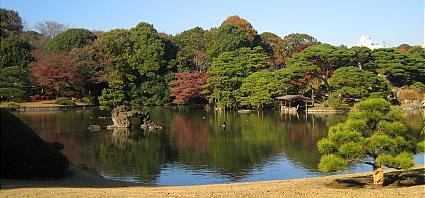
Rikugien is one of Tokyo's most beautiful, Japanese style landscape gardens. Built around 1700 by Yanagisawa Yoshiyasu, Rikugien literally means "six poems garden" and reproduces in miniature 88 scenes from famous poems.
Rikugien is quite a spacious garden with a central pond, islands, forested areas, man made hills and several teahouses. It takes about an hour to cover the garden's whole network of walking paths at a leisurely speed.
The Someimon Gate of Rikugien is a few steps south of Komagome Station on the JR Yamanote Line or Subway Namboku Line.
Admisson: 300 Yen; Open: Daily 9:00 to 16:30, except December 29 to January 1.
Koishikawa Korakuen
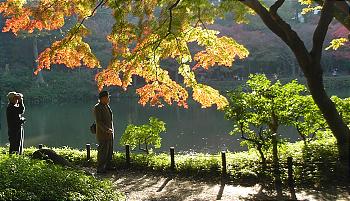
Koishikawa Korakuen is one of Tokyo's oldest and most beautiful Japanese landscape gardens. It was built by close relatives of the Tokugawa Shogun in the early Edo Period.
Like most traditional Japanese gardens, Koishikawa Korakuen attempts to reproduces famous landscapes from China and Japan in miniature, using a pond, stones, plants and a man made hill.
Koishikawa Korakuen is attractive during all seasons of the year, but particularly so in the second half of November, when the trees turn colors, during the plum festival in late February and when the beautiful weeping cherry tree near the garden's entrance is in full bloom.
Koishikawa Korakuen is a 5-10 minute walk from Iidabashi Station (various JR and subway lines) or a 10 minute walk from Korakuen Station on the Marunouchi and Nanboku Subway Lines.
Admission: 300 Yen; Hours: Daily from 9:00 to 17:00, except from December 29 to January 1.
Hama Rikyu

Hama Rikyu, the garden of a feudal lord's residence during the Edo Period, is one of Tokyo's most attractive landscape gardens. It is located alongside Tokyo Bay, next to the futuristic Shiodome district.
Seawater ponds, which change water level with the tides, former duck hunting grounds, forested areas and a teahouse are some of the park's attractions. Furthermore, the contrast between the traditional gardens with Shiodome's skyscrapers in the background is spectacular.
Hama Rikyu can be accessed by boat from Asakusa and Odaiba. Alternatively, it is a 10-15 minute walk from JR Shimbashi Station or Shiodome Station on the Oedo Subway Line and Yurikamome elevated train.
Admission to Hama Rikyu costs 300 Yen. It is open everyday, except during a short period around New Year.
Kyu Shiba Rikyu Garden
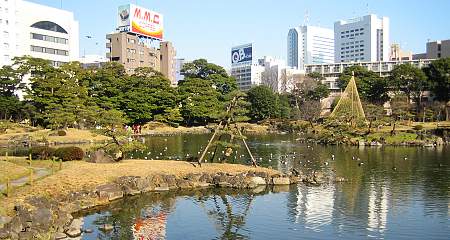
Kyu Shiba Rikyu Onshi Teien ("Former Shiba Villa Gardens") is a classic Japanese landscape garden in central Tokyo, located just next to Hamamatsucho Station and not far from Hama Rikyu, another popular Japanese landscape garden.
A green oasis surrounded by tall buildings, the Kyu Shiba Rikyu Garden features the typical elements of a Japanese landscape garden, including a pond and man made hills, symbolizing the ocean, lakes and mountains of the real world, and circular walking trails to enjoy the garden from various perspectives.
During the Edo Period, the garden was built on land reclaimed from Tokyo Bay, and served as the residence of various feudal lords and government officials. In 1875 after the fall of the feudal government, it was turned into the Shiba Detached Imperial Villa, however, all buildings were destroyed in the Great Kanto Earthquake of 1923.
In 1924, Kyu Shiba Rikyu Garden was opened to the public.
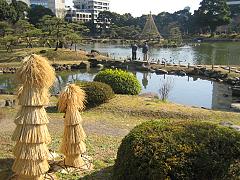 | 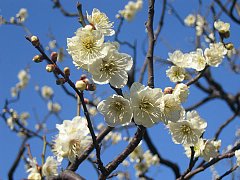 |
Kyu Shiba Rikyu Garden is located next to Hamamatsucho Station, five minutes south of Tokyo Station by JR Yamanote Line. It can also be reached in a short walk from Daimon Subway Station (Oedo and Asakusa Subway Lines).
Admission: 150 Yen; Hours: Daily 9:00 to 16:00, except from December 29 to January 3.
Imperial Palace East Gardens
The Imperial Palace East Gardens (Kokyo Higashi Gyoen) are a part of the inner palace area and are open to the public, except on Mondays, Fridays and some special occasions (see links below). Admissions is free of charge.
The East Gardens are the former site of Edo Castle's innermost circles of defense, the honmaru ("main circle") and ninomaru ("secondary circle"). None of the main buildings remain today, but the moats, walls, entrance gates and several guardhouses still exist.
Edo Castle was the residence of the Tokugawa shogun who ruled Japan from 1603 to 1867. Emperor Meiji also resided there from 1868 to 1888 before moving to the newly constructed Imperial Palace.
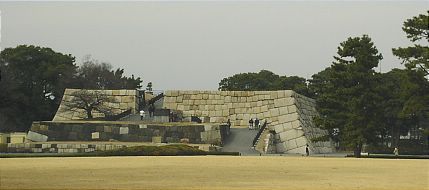
A wide lawn and the remaining foundation of the former castle tower can be found on top of the hill, where the castle's innermost buildings once stood. The castle tower was completed in 1638 as the tallest castle tower in Japan's history. But only a few years later in 1657, it was destroyed by citywide fires and has not been rebuilt ever since.
In place of the former buildings in the secondary circle of defense (ninomaru) at the foot of the hill, a nice Japanese style garden has been created.
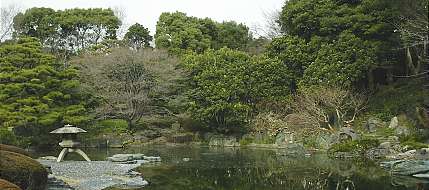
The Otemon entrance to the East Gardens is a short walk from Otemachi Station on the Subway Chiyoda, Tozai, Marunouchi, Hanzomon and Mita Lines, or a 5-10 minute walk from Tokyo Station.
Ueno Park
Ueno Park is a large public park just next to Ueno Station. It was opened to the public in 1873, and offers its visitors a large variety of attractions.
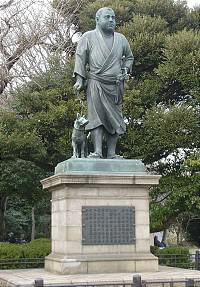
At the park's south entrance stands a statue of Saigo Takamori, an important personality of the late Edo and early Meiji Period. He played a central role in realizing the Meiji Restoration of 1868.
Ueno Park is famous for its many museums, especially art museums, namely the Tokyo National Museum, the Orient Museum, the National Science Museum, the Shitamachi Museum, the National Museum for Western Art and the Tokyo Metropolitan Fine Art Gallery.
Since 1882, Ueno Park is home to Japan's first zoological garden. Its main attraction are giant panda bears. The first panda bears where a gift from China on the occasion of normalization of diplomatic relations in 1972.
Shinobazu Pond is a large pond in Ueno Park. A temple for the goddess of Benten stands on the island in the middle of the pond.
Toshogu Shrine is a shrine dedicated to Tokugawa Ieyasu, the founder of the Edo shogunate, which ruled Japan from 1603 to 1867. It is well worth paying the 200 Yen admission fee in order to enter the inner shrine area and main building.
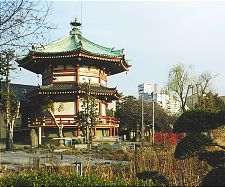 | 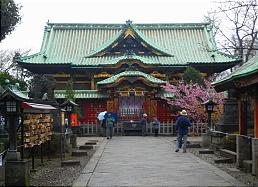 |
Last but not least, Ueno Park is famous for its more than 1000 cherry trees. During the cherry blossom season, Ueno Park becomes one of the country's most popular and crowded spots for hanami (cherry blossom viewing) parties.
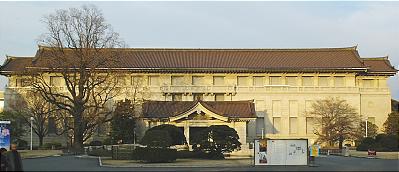
Ueno Park is just next to Ueno Station. Easiest access is provided by the station's "Park Exit".
Shinjuku Gyoen
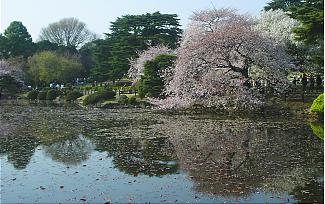
Covering 58 hectares, Shinjuku Gyoen is one of Tokyo's largest parks. It was opened to the public in 1949, after it had served as a garden for the Imperial Family since 1903.
Shinjuku Gyoen features three garden types: an English landscape garden with wide lawns, a traditional Japanese garden with teahouses and a symmetrically arranged, formal French garden. Furthermore, there are some forested areas and a greenhouse.
Shinjuku Gyoen is home to a large number of cherry trees of more than a dozen different species, making the park one of Tokyo's most popular and pleasant hanami spots during late March and most of April.
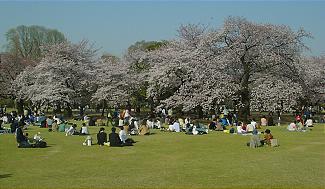
Shinjuku Gyoen has three gates. Shinjuku Gate is a 10 minute walk east from the "New South Exit" of JR Shinjuku Station, while Sendagaya Gate is a 5 minute walk from JR Sendagaya Station on the local Chuo/Sobu Line. Shinjukugyoenmae Station on the Marunouchi Subway Line, at last, is a short walk from either the Okido or Shinjuku Gate.
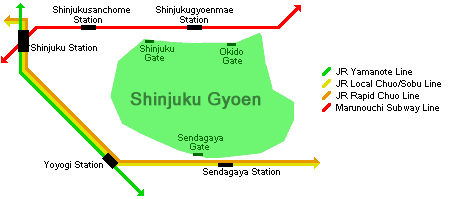
Admission: 200 Yen; Open: From 9:00 to 16:30. Closed on Mondays (Tuesday is Monday is a national holiday) from December 29 to January 3. There are no closure days during the cherry blossom season (late March to late April) and the Chrisanthemum Exhibition (first half of November).
Yoyogi Koen
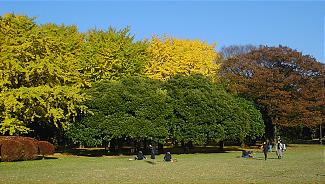
Yoyogi Koen (Yoyogi Park) is one of Tokyo's largest city parks, featuring wide lawns, ponds and forested areas. It is a great place for jogging, picnicking and other outdoor activities.
Although Yoyogi Park has relatively few cherry trees compared to other sites in Tokyo, it makes a nice cherry blossom viewing spot in spring. Furthermore, it is known for its ginko tree forest, which turns intensively golden in autumn.
Before becoming a city park in 1967, the area where Yoyogi Park is located today, served as the site of the olympic village for the 1964 Tokyo Olympics, and before that as a residential area for US military personnel.
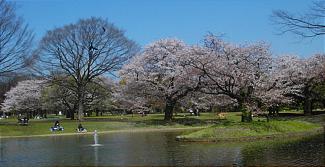
Yoyogi Park is a 3-5 minute walk from Harajuku Station on the JR Yamanote Line. It is located next to Meiji Shrine.
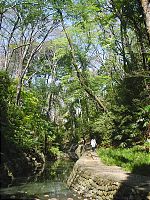
Todoroki Valley
The Todoroki Valley is probably central Tokyo's most unconventional green space.
Located in the middle of the densely populated Setagaya city ward, it is an attractive walking trail, leading for about one kilometer through a narrow, wooded valley along a small river.
At the other end of the valley stands the atmospheric Todoroki Fudo Temple together with some shrine structures and a number of cherry trees.
Todoroki Valley can be reached in a few steps from Todoroki Station on the Tokyu Meguro Line. Hotel reservations in Tokyo
Takaosan
Still located within metropolitan Tokyo, the densely wooded Takaosan (Mount Takao) is one of the closest natural recreation areas to central Tokyo, offering beautiful scenery, an interesting temple and attractive hiking opportunities. From Shinjuku, it takes 370 Yen and 50 minutes to reach the foot of the mountain.
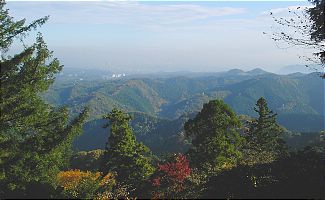
A network of numbered and well marked hiking trails, ranging from the broad and paved hiking trail number 1 to narrow nature trails, lead up the slopes and through the valleys of Takaosan. The peak is 599 meters over sea level and offers views of Tokyo, Mount Fuji and as far as Yokohama on clear days. There is a cablecar and chair lift leading half up the mountain.
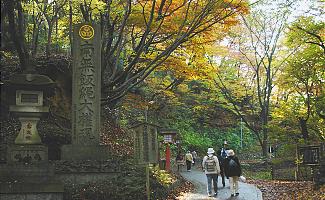
Considered a sacred mountain, Takaosan has been a center of mountain worship for more than 1000 years. The attractive temple Yakuoin stands near the mountain's top. Visitors pray there to Shinto-Buddhist mountain gods (tengu) for good fortune. Statues of the gods, one with a long nose and one with a crow beak, can be found at the temple and all over the mountain.
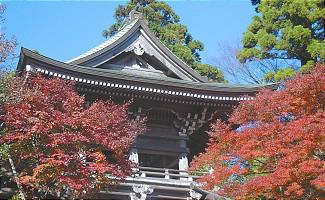
Due to its proximity to central Tokyo, Takaosan can get very crowded on weekends and during the second half of November, when the mountain becomes one of Tokyo's most popular koyo (autumn foliage) spots. Consequently, if you are looking for a break not only from the concrete but also the crowds of Tokyo, you are well advised to visit Takaosan during the week.
Keio Railways offer the cheapest and fastest connections to Takaosan. Direct semi-limited express trains, which take about 50 minutes and 370 Yen leave the underground Keio Shinjuku station every 20 minutes. Takaosanguchi Station, the train's terminal station, is located at the foot of the mountain.
The JR alternative is by Chuo Line from Shinjuku to Takao Station (540 Yen, about 50 minutes), where you transfer to the Keio Line and ride one more station to Takaosanguchi Station (120 Yen, 2 minutes).
Mount Mitake
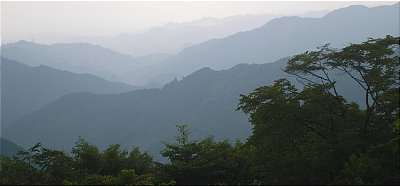
Mount Mitake (Mitakesan) is one of the many highlights of the Chichibu-Tama-Kai National Park, which covers more than 1250 square kilometers of forested mountains, hills, gorges and some rural towns in the prefectures of Yamanashi, Saitama, Nagano and Tokyo.
Besides a popular shrine, Mount Mitake offers various walking and hiking opportunities in virtually unspoiled nature. Located in the Okutama region, the westernmost part of Tokyo, the mountain can be reached in less than two hours from central Tokyo, and is accordingly popular among people looking for a break from the city.
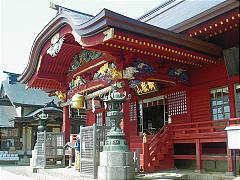 | 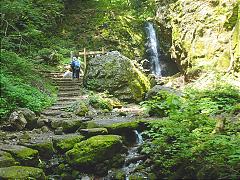 |
From the upper station of the Mitake Cablecar it is a 20-30 minute walk to the Musashi-Mitake Shrine on the mountain's summit (929 meters). On your way, you will pass a small village with many Japanese style inns and souvenir shops, which have been catering to visitors and pilgrims to Mount Mitake for centuries. It is believed that Musashi-Mitake Shrine has been serving as a center of mountain worship for almost 2000 years.
From the shrine, you have various hiking options to neighboring peaks and valleys. Among the most beautiful destinations is the so called "Rock Garden", which, in fact, is a narrow, forested valley with a picturesque stream, lots of moss covered stones and two nearby waterfalls. It takes less than an hour to reach the valley from the shrine.
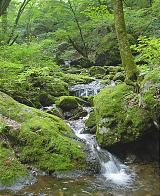 | 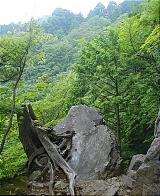 | 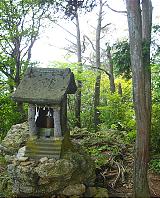 |
| Along the hiking trails | ||
If you want to walk some more, it is another 40-60 minutes from the Rock Garden to the peak of Mount Otake (1267 meters), from where you can enjoy nice views of the surrounding, forest covered mountains on clear days. Some passages are quite steep, but do not require any advanced mountaineering tools. Sturdy shoes, however, are recommended.
An excellent hiking map, which shows the extensive network of hiking trails in the Okutama region, is available for free at the Mitake Visitor Center (closed on Mondays), halfway between the upper cablecar station and the shrine.
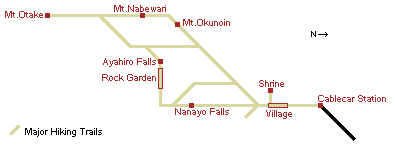
From central Tokyo, e.g. Shinjuku or Tokyo Station, take the frequently departing, orange JR Chuo Line to Ome Station (75 minutes from Shinjuku). A few trains go all the way to Ome. Otherwise, a transfer of trains is required at Tachikawa (40 minutes from Shinjuku).
At Ome Station, change to another orange train on the JR Ome Line (usually waiting on the opposite platform of the arriving train) and ride as far as Mitake Station (20 minutes). The whole trip from Shinjuku to JR Mitake Station costs 890 Yen one way and is fully covered by the Japan Rail Pass.
Once at Mitake Station, take the bus to the lower station of the Mitake cablecar (10 minutes, 270 Yen one way, about 2 buses/hour). The cablecar lifts you to close to the summit of Mount Mitake (1090 Yen roundtrip, about 3 departures/hour).